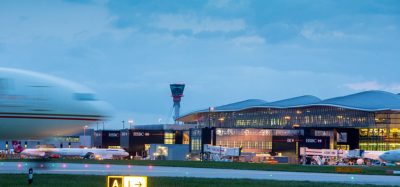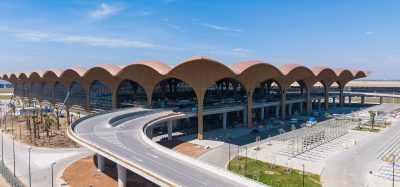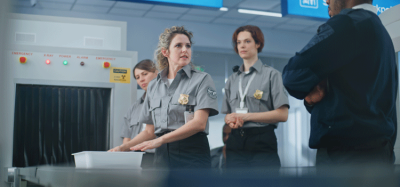Air cargo security: time is ticking for an integrated approach
Posted: 13 December 2010 | Drew Hillier, Freelance Writer | No comments yet
In the wake of the latest series of terrorist bomb plots, the enhancement of air cargo security has pushed itself firmly into the spotlight. Yet, as Drew Hillier reports, in the UK, for example, where 60% of air freight is carried in passenger airlines, (the remainder being handled by specialist cargo planes) whilst all passenger baggage is subject to inspection by X-ray, only a small amount of air cargo has hitherto been checked with similar rigour. With this in mind, and the global economic belt being pulled ever tighter, it’s time that the industry adopts far greater degrees of joined up thinking to ensure belly-hold cargo does not constitute a major weak link in the worldwide distribution supply chain.
In the wake of the latest series of terrorist bomb plots, the enhancement of air cargo security has pushed itself firmly into the spotlight. Yet, as Drew Hillier reports, in the UK, for example, where 60% of air freight is carried in passenger airlines, (the remainder being handled by specialist cargo planes) whilst all passenger baggage is subject to inspection by X-ray, only a small amount of air cargo has hitherto been checked with similar rigour. With this in mind, and the global economic belt being pulled ever tighter, it’s time that the industry adopts far greater degrees of joined up thinking to ensure belly-hold cargo does not constitute a major weak link in the worldwide distribution supply chain.
In September this year, during a visit to the hugely successful and well-attended Transport Security Expo at London Olympia, I was struck by two recurring themes which appeared to span virtually every conversation in regard to air cargo security: the balancing of economics with the general lack of a coordinated approach across the piece. By common consensus, the cost efficiency of airport security is required to weigh several potentially competing priorities: that of the threat itself, the financial burden of security measures, and funding security whilst driving growth. Aye, now there’s the rub!
The threat is of course real. Even in the short time since the Transport Security Expo, we’ve had a slew of new attacks targeted to bring down airplanes, all of which demand revised security measures and, naturally, expensive technology. Take a look at any one of the shiny new security scanners on the market, for instance – as I found myself doing at Olympia – and you’re looking at some pretty hefty price tags!
Join us live: Shaping the Next Generation of Hold Baggage and Air Cargo Screening
Join us live for an insightful webinar on 11th December at 14:00 GMT, in collaboration with Smiths Detection, as we explore the strategic balance of operational efficiency, regulatory compliance, and sustainability in high-volume security environments.
This session offers a focused look into future-proofing your security strategy.
Key learning points
- Cost Reduction: Strategies to minimize bag travel time while simultaneously reducing operational costs.
- Regulatory Roadmap: Insights into the next wave of regulatory changes and their impact on future investment decisions.
- Sustainable Systems: Practical approaches to building sustainability into security systems and lowering the total cost of ownership (TCO).
- Scalable Solutions: Real-world examples of scalable systems supporting current airport growth and preparing for tomorrow.
Register now for expert insights, case studies, and actionable strategies on operational efficiency!
As in all such balancing acts, when the conundrum of funding security is raised, it becomes dominated by the juxtaposition of who pays and who owns the risk. As articulated by David Trembaczowski-Ryder, Senior Manager – Aviation Security, ACI Europe, “regulations determine requirements, but globally, the picture differs. Take the U.S., for example, where the Department for Homeland Security through the Transport Security Administration funds all such security measures, including testing, equipment and personnel. Germany’s Federal Government, on the other hand, pays for security equipment and personnel while airports pay for infrastructure and facilities. In the UK (and most other EU Member States), Airports shoulder the cost for everything.”
And all this set against a backdrop informed by an admixture of fiscal pressure, a largely media-driven public (mis)perception of risk, yet an almost unprecedented opportunity for growth in transporting goods by air. It doesn’t take a genius to figure out that 2010 has been a particularly trying year for the airline industry. Nonetheless, in the UK alone, BAA’s Q1 and Q2 2010 results contain a stand-out statistic showing the amount of cargo carried has taken the annualised figure above the pre-recession peak. John Holland-Kaye is BAA’s Commercial Director. Speaking to him recently, I began by noting how these results come on the very day that Britain posted its largest trade deficit ever. So, presumably, the figures represent imports over exports?
“Yes, we mainly measure the imports coming into the UK; Heathrow is the biggest cargo hub in the UK by value – including all that which comes through the seaports – so it’s a good indicator of the range of goods coming in to the country. What is also staggering, considering the ongoing economic squeeze, is the sheer volume of exports from the UK to destinations like India. 39% of all exports were to there, higher than the figure for the US and China”. As Holland-Kaye affirms: “It is a relatively unusual amount, but the cargo coming out of Heathrow is going in the belly-holds of airplanes, so I believe what we’re seeing is another indication of the growing economic importance of the so-called BRIC countries.”
BAA’s performance is in line with the broader picture. According to IATA, 26 million tonnes of goods travel around the globe by air each year. Which in itself presents a colossal security headache; electronic screening of all this diversity and volume of air freight would involve taking it out of containers, breaking up pallets and unpacking of goods, thus largely negating the very reason why shippers prefer the speed and convenience of air freight.
It must surely be unrealistic to scan everything – or so the argument goes. And even if that were possible, explosives can be missed. Having gained a level of notoriety akin to Richard Reid’s shoes, October’s printer cartridge bomb went through an initial scanner without so much as occasioning a raised eyebrow. In that particular case, the substance known as PETN was “cleverly” concealed within a package, making it very difficult to detect. In fact, as we now know, rather than cargo screening, the lethal items were discovered only as a result of robust intelligence work and a tip-off from Saudi intelligence. Company employees in Yemen were not required to X-ray the printer cartridges in which the explosives were hidden – a chilling facet that immediately prompted officials in the U.S. and Canada to announce new rules banning freight out of Yemen and Somalia. Yet the existence of PETN (full name pentaerythritol tetranitrate) is nothing new; it is manufactured and used widely, not just by the military, but also by civilian quarrying and demolition outfits. Nor is this particular explosive necessarily hard to find, according to specialists such as Roland Alford, managing director of Alford Technologies, which develops bomb disposal systems.
“PETN is one of the most common explosives. It does not surprise me that they did not detect it in this case – even though, chemically, it is easy to detect,” says Alford, who conceded that the way it had been packed within the printer’s toner cartridge was “sophisticated” because it made swabbing for traces very difficult. Likewise if sniffer dogs or machines are to find it, then the air from the container in which it is sealed needs to be “sucked out” first. And while X-ray technology being developed will have the supposed intelligence to detect explosive materials, the current technology used at airports cannot identify PETN, Alford insists. So, there is a problem here. People with ill intent are getting increasingly inventive in the way they package improvised explosive devices. No wonder, as Roland Alford confirms, “this time we were extremely lucky.”
What we do know, sadly, is that the threat – especially of Jihadist origin – is unlikely to diminish. Far from it. Leading intelligence expert, Justin Crump, CEO of risk consultancy firm Sibylline explains why al-Qaida chooses to target aviation principally because of the powerful and highly symbolic media-grabbing fear factor. And it’s relatively cheap. At the time of writing, I see the group have been calling upon it members to launch more such diabolical attacks, calling them a “good bargain.” The remarkably detailed account, which appeared in an online magazine produced by al-Qaeda in the Arabian Peninsula, stated that it cost just $4,200 to mail two parcel bombs from Yemen.
Therefore, the problem is not going to simply go away anytime soon says Crump, speaking to Al Jazeera TV recently. Furthermore, he said how a lot of the security measures put in place were all too often “after the event. When the terrorists find something that works,” cautioned Crump, “and they get through, then we bring in someone to block it. We’re always playing catch up,” he said, concluding: “but the terrorists then move on to something else as soon as they think we can counter it.”
Justin Crump makes a salient point. After all, the current regulations governing air freight were introduced in the wake of the Lockerbie bombing in 1988. In fact, a certain degree of knee-jerk reaction has driven air transport security from around that period, with each subsequent – and let’s face it, extremely rare – event giving rise to greater, and in some minds ever more hysterical, counter-measures. This was precisely the area flagged up by a keynote speaker at October’s Transport Security Expo. ACI Europe’s David Trembaczowski-Ryder outlined how security regulations and new measures had been shaped in the aftermath of milestone terror events. From Lockerbie to the current incidents, via 9/11, Glasgow in 2007, Detroit in 2009 et al, “the post-event approach to regulation creates unforeseen incremental costs which are “absorbed” by industry,” says Trembaczowski-Ryder. “The cost of security post-September 2001 constitutes the highest proportion of fixed costs inherent in the average airport business model, amounting to some $6.1b globally, which represent 36% of any given airport’s operational costs!”
Achilles’ heel
So, with unprecedented growth being enjoyed by the air cargo industry, yet an almost exponential increase in the threat to human life and business activity posed by terrorist acts, it is staggering to ponder on the general lack of a standardised procedure – a globally joined-up approach, it you will – for checking air freight, with regulations varying from country to country. These days, the U.S. authorities now require all packages are screened before being loaded onto passenger flights originating in the U.S. But there’s no such requirement in force for all cargo loaded onto North-Americanbound international passenger flights, or on cargo-only flights, such as those operated by UPS and FedEx. Indeed, only in August this year, nearly a decade on from the September 11 attacks, did the United States require that all cargo be screened on its domestic-originated passenger flights. That rule alone gave rise to considerable lobbying on the part of airline operators, air cargo carriers and trade groups alike, who between them devoted in excess of $32m in 2009, and a further $28m so far this year, to pushing their case on Capitol Hill.
But, as Bob Dylan sang, the times they are a-changing! In a climate of fear, many are calling for 100% X-ray screening of all air freight worldwide. The United States authorities are already calling for such measures, albeit aware of the time and cost implications if this were to become internationally standard. Security measures announced by both the U.K. and U.S. governments since the Yemeni bomb plot discovery have emphasised a “layered” approach, based on the risks presented by the cargo’s origin and its provenance. Recently, in answer to what steps he has taken to secure international agreement on increasing levels of security for air cargo, British Secretary of State for Transport, Philip Hammond, commented how, within Europe, common rules on civil aviation security are set out in legislation.
“My officials have met and are working closely with our EU partners to consider whether these rules need amending in light of the 29 October cargo bomb incidents,” Hammond said, adding: “The UK has also called on the European Commission to advance work already underway in relation to aviation security screening requirements for cargo coming into and moving through Europe. In addition, my officials are working closely with the International Civil Aviation Organisation. We have taken an active role in promoting Amendment 12 to Annex 17 of the Chicago Convention. This will strengthen cargo security requirements worldwide. We are also working with ICAO and its member states to devise and promote the next steps towards further enhancement of international cargo security.”
“Other changes anticipate exotic new ways of hijacking planes”, said Denys Wibaux, director of the ICAO’s legal division. One such measure makes it a crime to take control of a plane by remote control or to use hostages on the ground to force pilots in the air to obey terrorists’ orders. “It’s a remote scenario, but it’s the kind of thing we want to make absolutely sure is covered in the international laws,” Wibaux said. “Sometimes the reality is even worse than our imagination.”
While not binding, the ICAO recommendations as referenced by Mr Hammond carry tremendous weight. The U.S. Transportation Security Administration has praised the proposal, saying it “exemplifies global collaboration. Due to the evolving nature of the threat, this is an ongoing effort for the entire international community,” the agency said in a written statement. Meanwhile, the European Union is set to unveil its own package of recommendations to improve air cargo security. European Transport Commissioner, Siim Kallas, said the enhanced measures would include more stringent rules on air freight screening, new criteria for identifying potentially risky cargos, and better intelligence-sharing regarding possible threats both within and outside Europe. Nevertheless, going out on a limb late this November, Germany revoked the licenses of three companies for failing to meet cargo security standards and issued warnings to twenty, as yet unidentified others. In a move welcomed by the U.K. government, Germany has demanded that the EU draw up a blacklist of unsafe foreign freight dispatchers.
“National measures are not very effective,” bemoaned Thomas de Maiziere, Germany’s interior minister, who continues to voice his concern that suspicious parcels, later identified as bombs, were carried as postal cargo on passenger jets and that they were able to cross the European Union, including German territory.
Looking toward a shared vision
The move towards more intelligent aviation security – what might be termed as a coordinated response on cargo security – has been heralded especially by the influential International Air Transport Association (IATA), who call on security regulators around the world to work together to make the skies more secure by addressing the challenges related to cargo security and data collection.
“We are much more secure than in 2001, but there is room for improvement,” said Giovanni Bisignani, IATA’s Director General and CEO at the opening of AVSEC World in Frankfurt recently. Bisignani identified several areas where more progress is needed to further improve aviation security, saying how the events in Yemen “have put cargo security at the top of our agenda. Air freight drives the world economy. The products that we carry represent 35% of the total value of goods traded internationally. In 2009, airlines carried 26 million tonnes of international cargo. By 2014, that will increase to 38 million tonnes. Transporting these goods safely, securely and efficiently is critical,” said Bisignani, who emphasised how cargo security costs should be shared. The airlines and airports shouldn’t be solely responsible for enforcing security measures, he said, adding that the job of security screening should be spread throughout the supply chain, beginning with manufacturers. So, we shall see if the various authorities and commercial vested interests get their act together sufficiently to fulfil the calls for better and more integrated air cargo security while reducing costs for 21st century aviation. Certainly, as the IATA’s boss says, there’s a role for industry suppliers. But as Siim Kallas puts it: “If this is going to be more expensive, then it might be a little more expensive, there is no security for free.”
Interestingly, this was precisely the theme espoused by Baroness Pauline Neville-Jones, the former Chairman of the British Joint Intelligence Committee, and now David Cameron’s Minister of State for Security with a permanent position on the newly created National Security Council. Speaking in August, the noble Baroness said how “…the security industry has an important part to play in what should be a national effort. The view the Government takes is that airport security is extraordinarily important. We cannot let our guard down.” Shortly afterwards, Baroness Neville-Jones found herself apprehended by security staff when they stopped her taking a banned amount of liquid onto a plane. Ironically, she was en-route to a Washington summit to discuss the war on terror with U.S. security chiefs! A perfect illustration, perhaps – if any were required – of the need for greater efforts towards a joined-up approach?
The International Airport Summit is open for registration!
Date: 19 – 20 November 2025
Location: JW Marriott Hotel Berlin
At our flagship event of the year, we will dive into the future of airport operations, with expert-led sessions on passenger experience, innovative smart technologies, baggage handling, airside operations, data, security, and sustainability.
This is where global airport leaders come together to share insights, challenges, and real-world solutions.
Limited complimentary passes are available for eligible professionals – first come, first served!


















